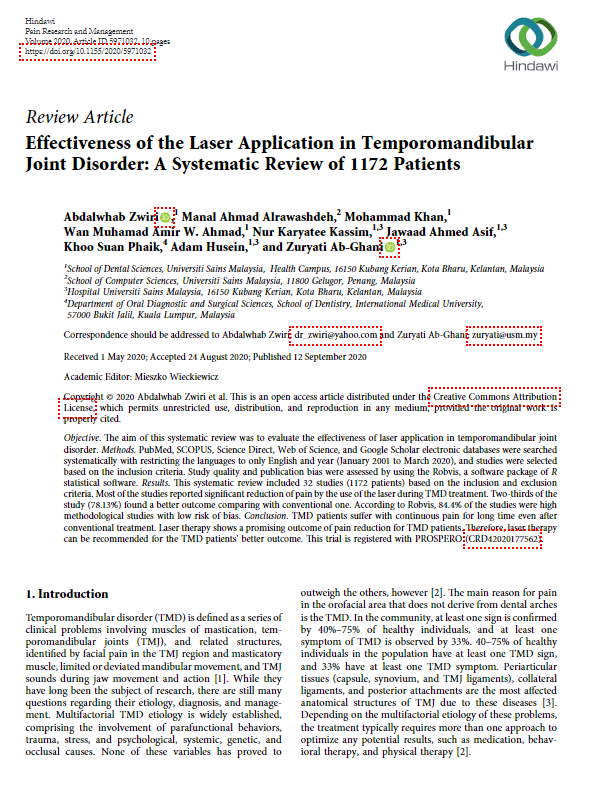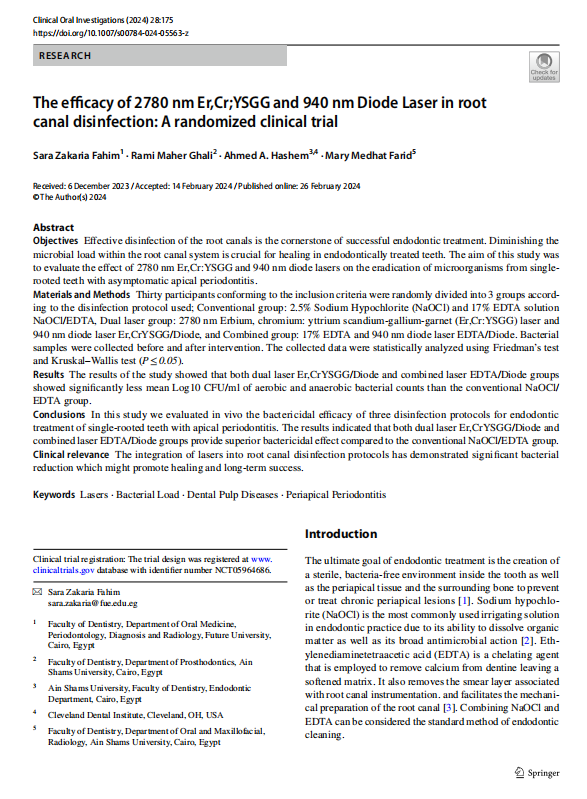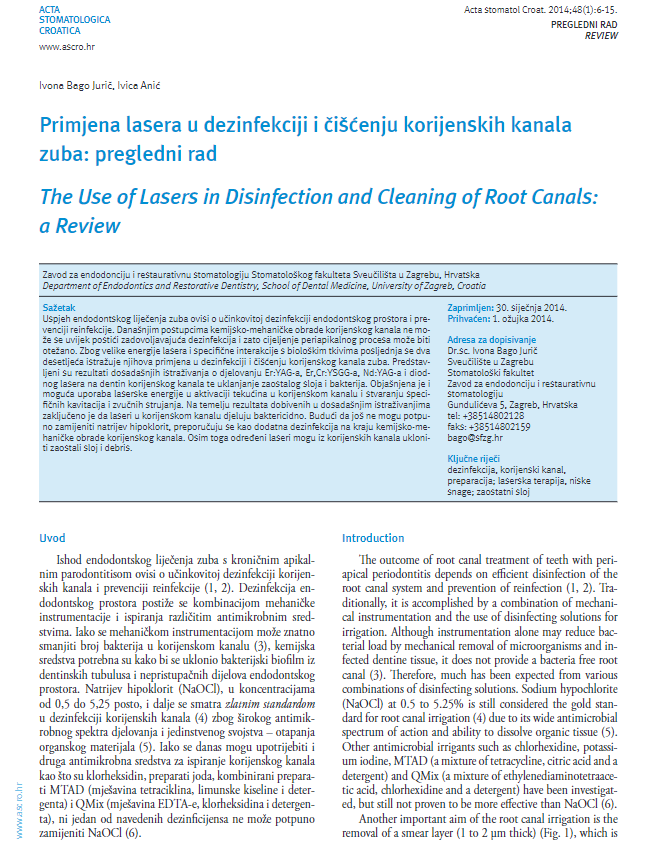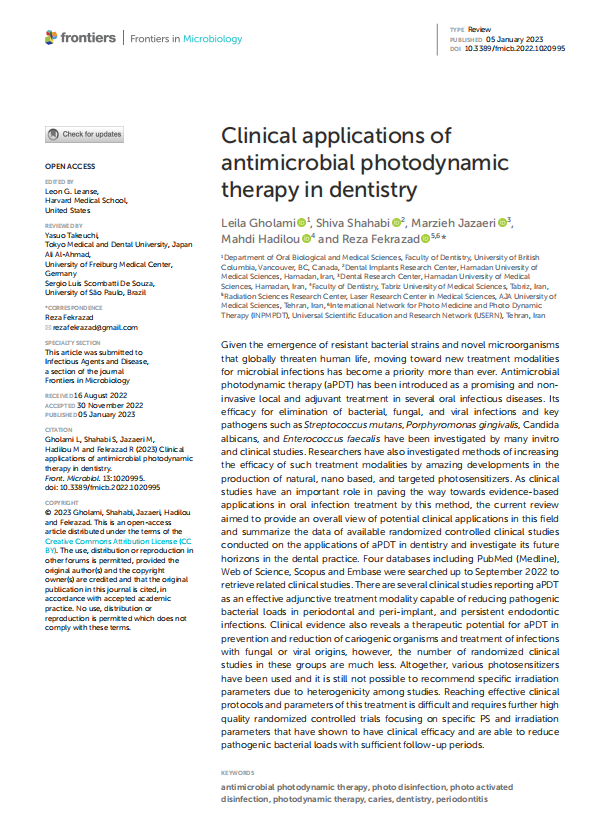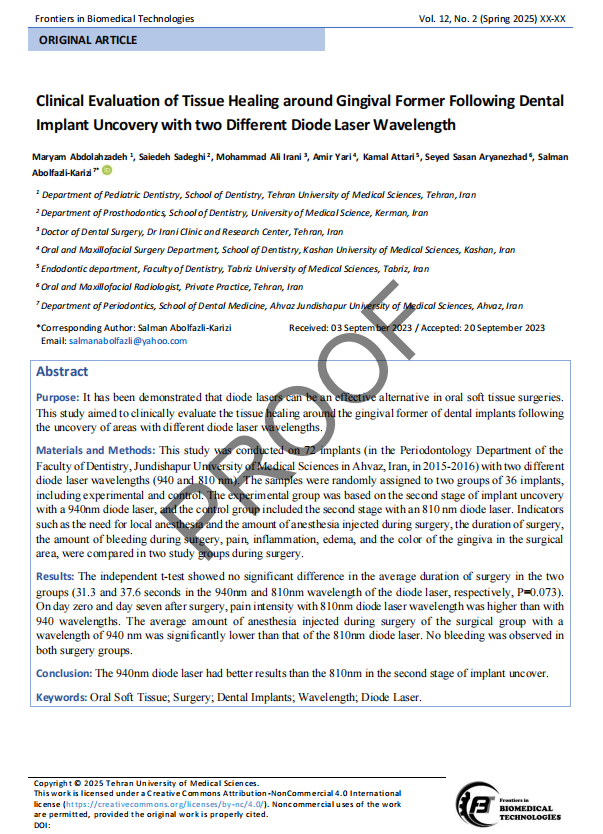Effectiveness of the Laser Application in Temporomandibular Joint Disorder: A Systematic Review of 1172 Patients
This systematic review assessed the effectiveness of laser therapy in treating temporomandibular joint disorder (TMD). Databases including PubMed, SCOPUS, Science Direct, Web of Science, and Google Scholar were searched for studies in English from January 2001 to March 2020. A total of 32 studies involving 1172 patients were reviewed. Most studies reported significant pain reduction with laser therapy, with 78.13% showing better outcomes compared to conventional treatments. According to Robvis analysis, 84.4% of the studies had high methodological quality with low risk of bias. The review concluded that laser therapy is promising for reducing pain in TMD patients and can be recommended for better outcomes.
